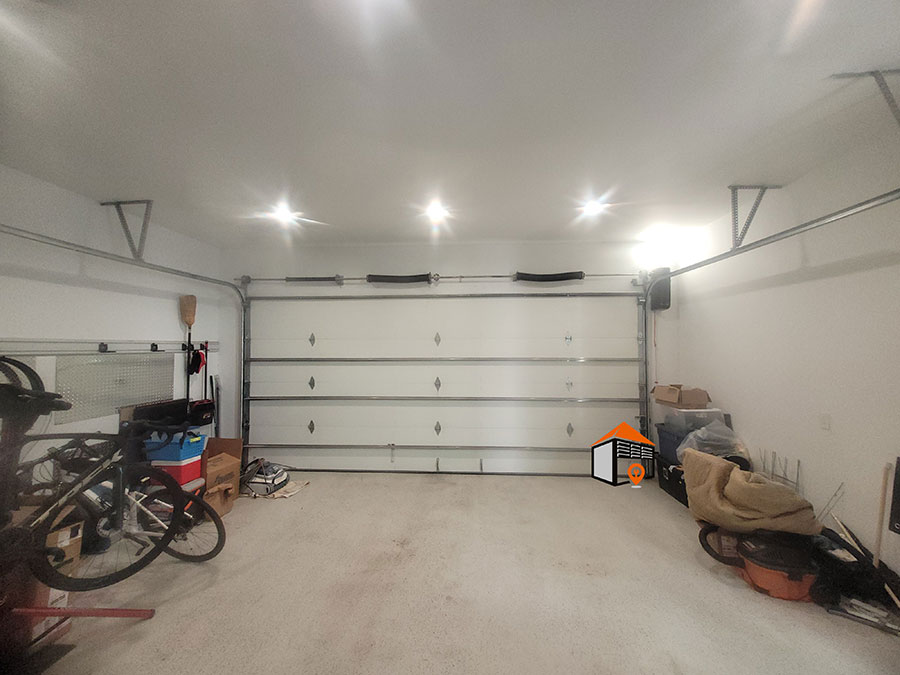I have a two-car garage, and my one-piece garage door sags in the middle when the door is in the up position. Is that normal, or should I fix that?
Causes of Sagging Garage Doors
There are a few things that can cause this problem with one-piece garage doors. Usually, there is a metal rod that runs the length of the door, with one on top and one on the bottom of the garage door. In the middle, there is a triangular piece of metal, and this rod is tightened up. Sometimes they are adjustable, and what this does is act like a strut for a wood door since wood doors will tend to warp from moisture and the elements.
Identifying Loose Struts
Sometimes these struts can work their way loose, and even the triangular metal piece in the direct middle can come away from the door. When this happens, it prevents the rod from putting any tension on the garage door, causing it to warp when the door is in the up position. This is because all the weight is concentrated on the middle of the door when it is up, unlike when it is down.
DIY Repair Steps
If you want to try and fix this problem yourself, it can be relatively easy. First, check to ensure the steel triangular piece of metal is attached to the door. If it has come apart, find a way to screw or nail it back into place directly in the middle. The rod should slide into a visible slot. If it is not tight, look for an adjustment or a nut on the left or right side of the garage door that will tighten it up.
Considerations for Top and Bottom Sagging
It’s important to note that this issue can happen at both the top and bottom of the garage door, so you should check both ends.
Structural Integrity of Framing Lumber
Another reason for this sagging issue could be the piece of lumber that frames the door. Typically, there’s a 2×6 that runs along the top and bottom of the garage door. Over time, this wood can split due to years of use and exposure to the elements, particularly moisture.
Damage Caused by Garage Door Openers
Often, the most common reason for splitting is related to the opener attached to the top piece of wood. Unfortunately, splits might not always be visible, especially if the wood is painted. It can often be during operation when you notice the wood starting to split, particularly when the opener is engaged.
Inspecting Lag Screws for Damage
Sometimes, the lag screws that hold the opener bracket on the top of the garage door can be too large or not pre-drilled. Over time, these screws can distort the wood and exacerbate the splitting, particularly if the opener is consistently pulling or pushing on it.
When to Seek Professional Help
If you cannot figure out how to fix this problem, you might need to replace the piece of 2×6 lumber, depending on the size of your garage door. However, my recommendation would be to call a garage door company unless you are proficient in construction and well-versed in wood framing.
Conclusion
Sagging garage doors can signal underlying issues that require immediate attention. Whether it’s a simple adjustment or more substantial repairs, addressing these problems promptly can save you time and money in the long run. Always assess your comfort level with repairs and consult with experts when necessary to ensure the safety and functionality of your garage door.
